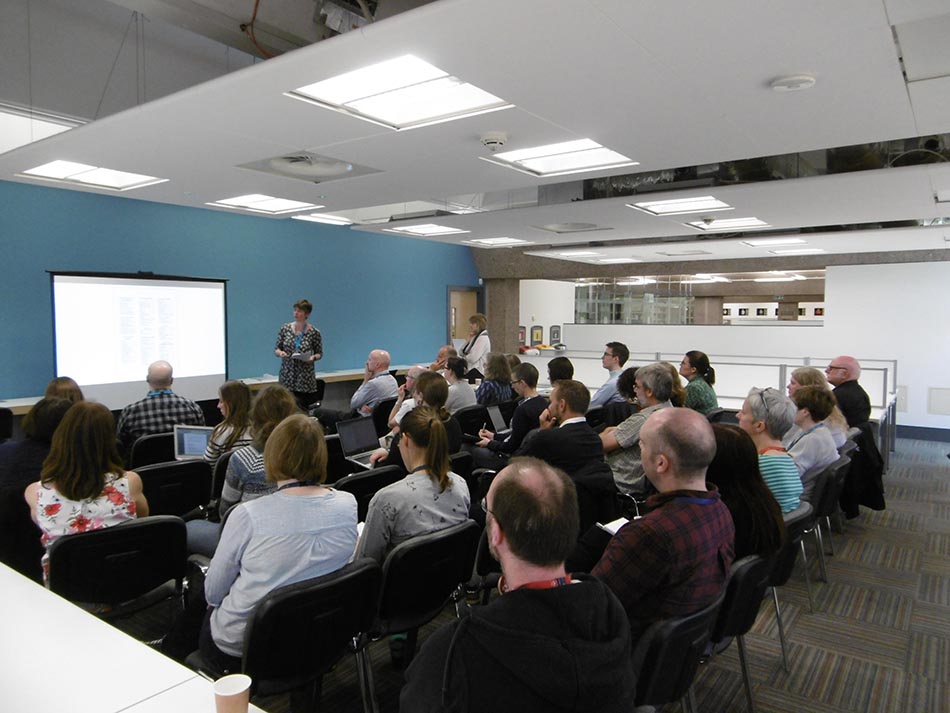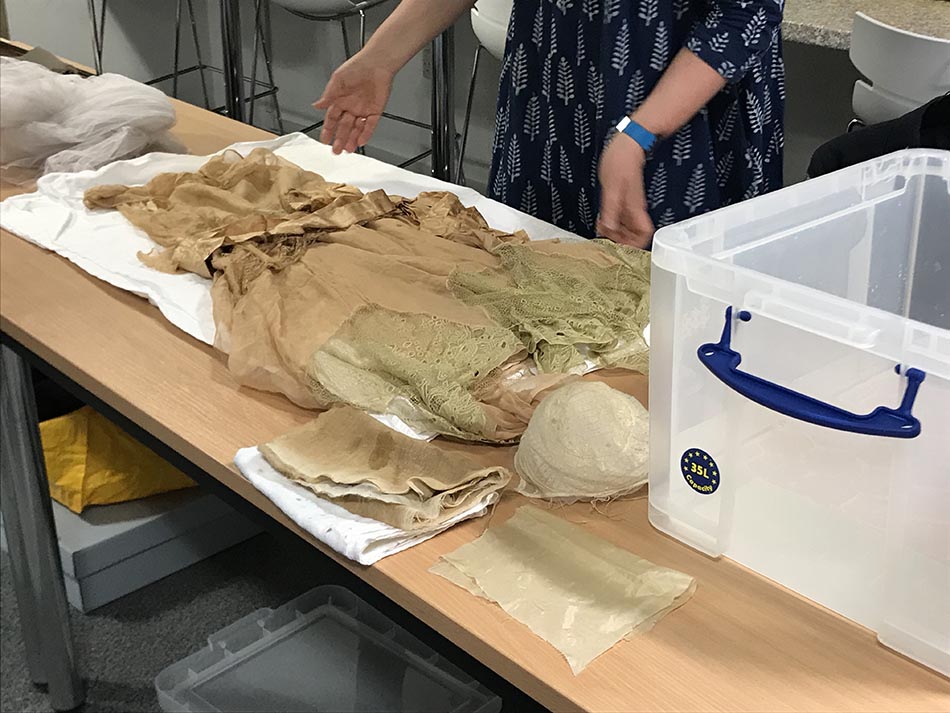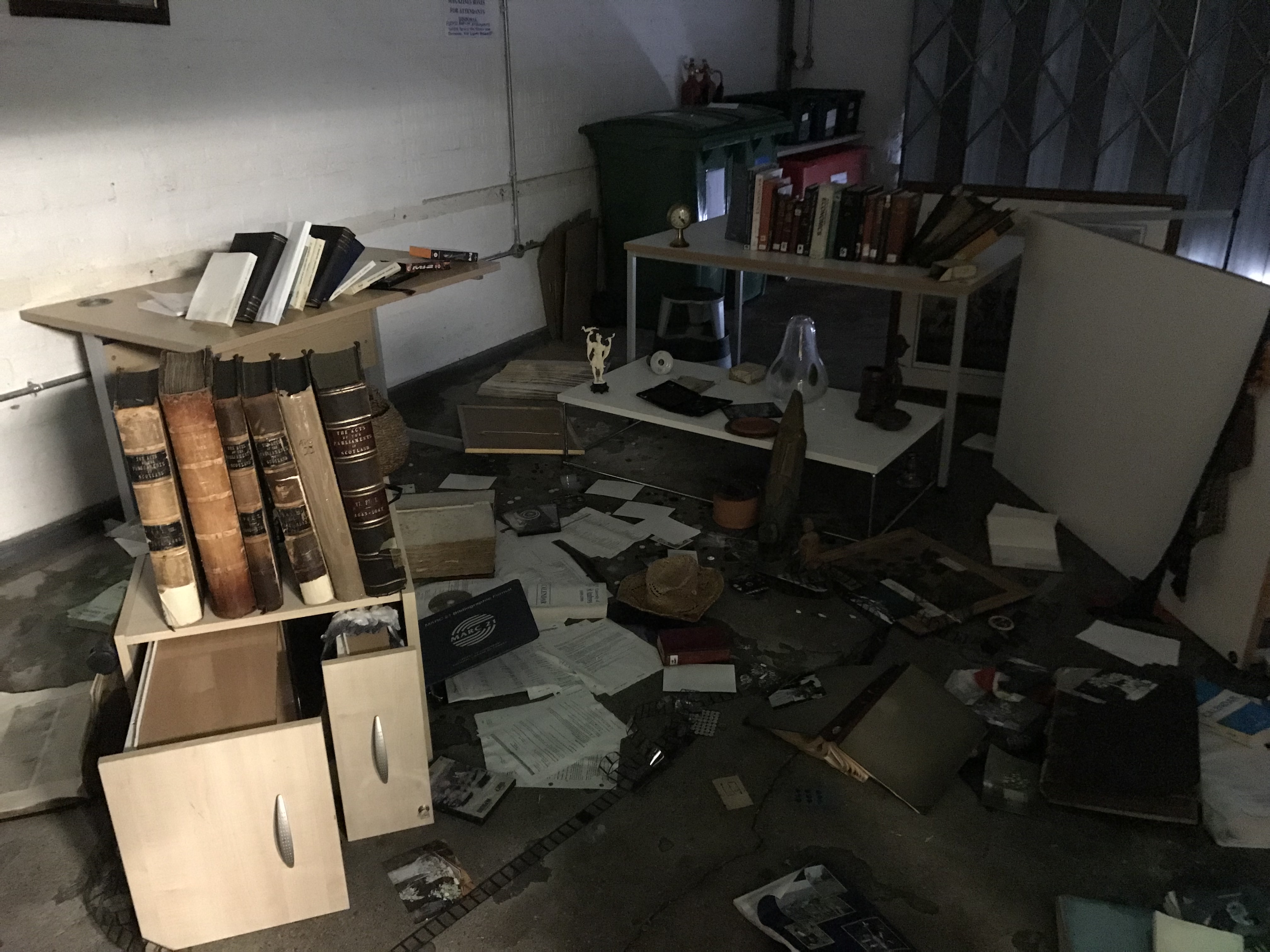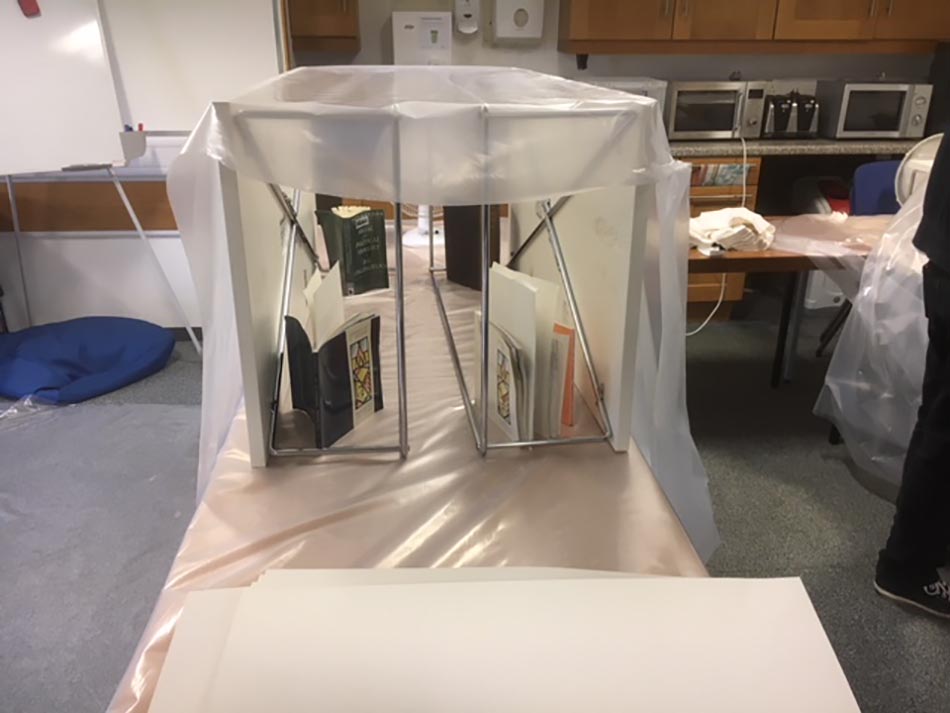HELP! It’s an emergency…
In June, staff from the University’s Library and Museum Collections attended a one-day training course on the salvage of library, archive and museum collections. The course was organised by the Library’s Special Collections conservator Erica Kotze ACR and Helen Faulds, Library Collections Manager, and was hosted by the University Library in association with the Scotland group of the Institute of Conservation (ICON). The course was facilitated by Helena Rodwell and Sophie Rowe, two conservators from the University of Cambridge Museums where they run this course regularly. A watch manager from the Scottish Fire and Rescue Service also attended as an observer to offer feedback and potential support for future courses. The training was particularly timely this year as staff across the University are aware of the importance of robust emergency planning, and regular training, following a serious fire in the University’s Biomedical Sciences Building at the start of the year. In this blog post Maia Sheridan, Manuscript Archivist in Special Collections, and Claire Robinson, Collections and Exhibitions Curator in Museums Services, describe their experience of the course.

The morning session consisted of theory presentations on topics that provided guidance on how to prepare for a salvage operation, set up a triage point, move damaged items and provide first-aid treatments for different types of collections. Delegates had the opportunity to take part in break-out sessions with conservators from different specialisms including: Saho Arakawa ACR paper conservator at the National Records of Scotland; Tuula Pardoe ACR textile conservator from the Scottish Conservation Studio, Will Murray ACR artefacts conservator also from the SCS and Henry Matthews ACR and Gail Egan ACR both paintings conservators at Egan, Matthews & Rose. The conservators provided practical ‘first aid’ demonstrations and shared their experiences of carrying out salvage operations in a variety of different contexts, from the devastating Perth Flood of 1993 to small-scale leaks. Both of us found the methods of salvage for the materials we don’t usually work with to be very illuminating. For Claire, as a museum professional, it was particularly useful to develop more detailed knowledge about the salvage of archive and library materials, which she could be called upon to assist with as part of a wider University response to a disaster situation. Maia, as an archivist, found the training on salvage of paintings, textiles and objects was very interesting for the same reasons.

The course dealt mainly with the threat from water, from flooding, but also in the aftermath of a fire where the water damage from efforts to extinguish the fire will be significant. The afternoon session consisted of a practical salvage session based on a scenario that involved a flood in the University’s Main Library. The library’s loading bay had been set up as ‘a store’ with furniture and a range of mock collection items, from an oil painting on canvas in a gilt frame to leather bound volumes, an unrolled reel of microfilm and tens of tiny buttons. We were briefed about an incident in ‘the store’ where there had been a small fire which had been extinguished. The fire services had given us the go ahead to enter the store, but the power was out so the store was in darkness. Furniture and collection items had been knocked over and were in disarray. Most of the items had been soaked and there were pools of water on the floor.

The practical session gave us the opportunity to put theory, as discussed during the morning session, into practice. The practical exercise was a valuable hands-on and team-building experience that provided attendees with the opportunity to take on roles within disaster recovery, triage, and documentation teams as part of a salvage effort. The practical exercise demonstrated the importance of having a detailed and workable plan, including a list of salvage priorities. It also provided an insight into the vast amount of resources, both in terms of staffing and physical equipment (PPE clothing, crates, fans etc.), and space that was required to carry out a salvage operation.

Here are Maia’s experiences of the afternoon salvage session:
“The most useful and difficult part of the day was the practical salvage and recovery exercise. Suddenly having to think how to organise a recovery room, which was my initial role, was very challenging, having only had a morning’s lectures. Trying to find the supplies we needed, setting up wet and dry areas, with fast and slow drying, remembering to put on the humidifiers, and how to pack for freezing, was all quite daunting. It was stressful being in charge of a team, with material constantly arriving from the salvage area with the need to record everything at triage and make decisions on how to treat it, and there was too much running back and forth for efficiency.
Recording at the triage station was time consuming and there was initial uncertainty if recording and triage decisions could or should be done by the same people. We also needed to work on a better method of keeping track of items, recording them at recovery and where they go from there. It would be very easy to lose track of items and think they had been lost in the incident rather than lost in the recovery process. More people were needed at certain points and certain times in the operation, so everyone needed to be flexible and ready to move to another role. We did all switch roles: I went to the salvaging team in the disaster area which was another learning experience. It was hard work, in the dark using headtorches, deciding what to recover first once the priority list had been worked through, and how to move items without further damaging them.
The practice session also highlighted how much room salvaging even a small incident requires, and how soon you run out of space. There were revealing comments from the attending fire officer on the need to close the site, and commandeer people and spaces to use in a crisis. It was clear that we need to know how much we can handle ourselves and when to call in professional help.”
Many thanks to Gabriel Sewell and John MacColl for supporting the training, to the ICON Scotland group for organising the training day and to all those involved in delivering the event. It was a very worthwhile course, which we hope never to have to implement.
Claire Robinson
Collections and Exhibitions Curator, Museum Collections
Maia Sheridan
Manuscripts Archivist, Library Special Collections